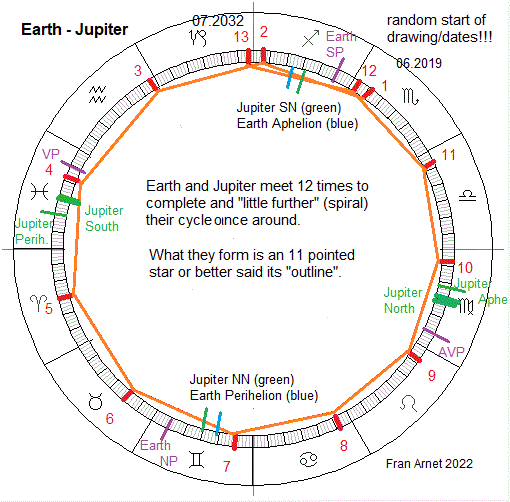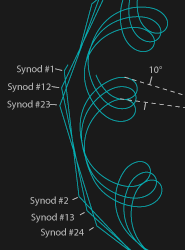

Jupiter and Eris cycle 2023 to 2035 - August 2025 update
Jupiter and Eris cycle update August 2025 - heliocentric sidereal planetary cycle Astrology. The original conjunction of 2023 has now evolved to 72 degrees. Working title: "in some situations silence can be gold"


Jupiter and Asbolus - 2025 to 2038
Jupiter and Asbolus conjunction 2025 including their geometry, conjunction list and more... a cycle that shows why all the research is worth the time...


12,5 years cycle of Jupiter & Pluto - June 2025 update
The Jupiter and Pluto 12,5 years cycle started in 2020 - "live update post"...
150 degrees on 13th of June 2025
120 degrees on 14th of June 2024


The Jupiter - Saturn cycle
The Jupiter - Saturn cycle from 2020 to 2040 - Their first 90 degrees angle becomes exact on 27th of January 2025...


Jupiter and Neptune 2009-2022-2035... May 2024 update...
Jupiter-Neptune cycle update - May 2024 Jupiter 60 degrees ahead of Neptune. Working title "Shrinking to heath" or sometimes less is more.


The Jupiter - Uranus dance
The March 2024 conjunction of Jupiter and Uranus with the working title: From sexual frustration to liberated creativity and self expression


Jupiter's "kingly role" from various perspectives
Since I have observed the “great conjunction” of Jupiter and Saturn, my relationship with the Two has changed and I researched a lot...


The Jupiter and Chiron dance
their heliocentric planetary cycle sidereal Astrology from 31st January 2023 to October 2036 Chiron crosses the orbits of Saturn and...





